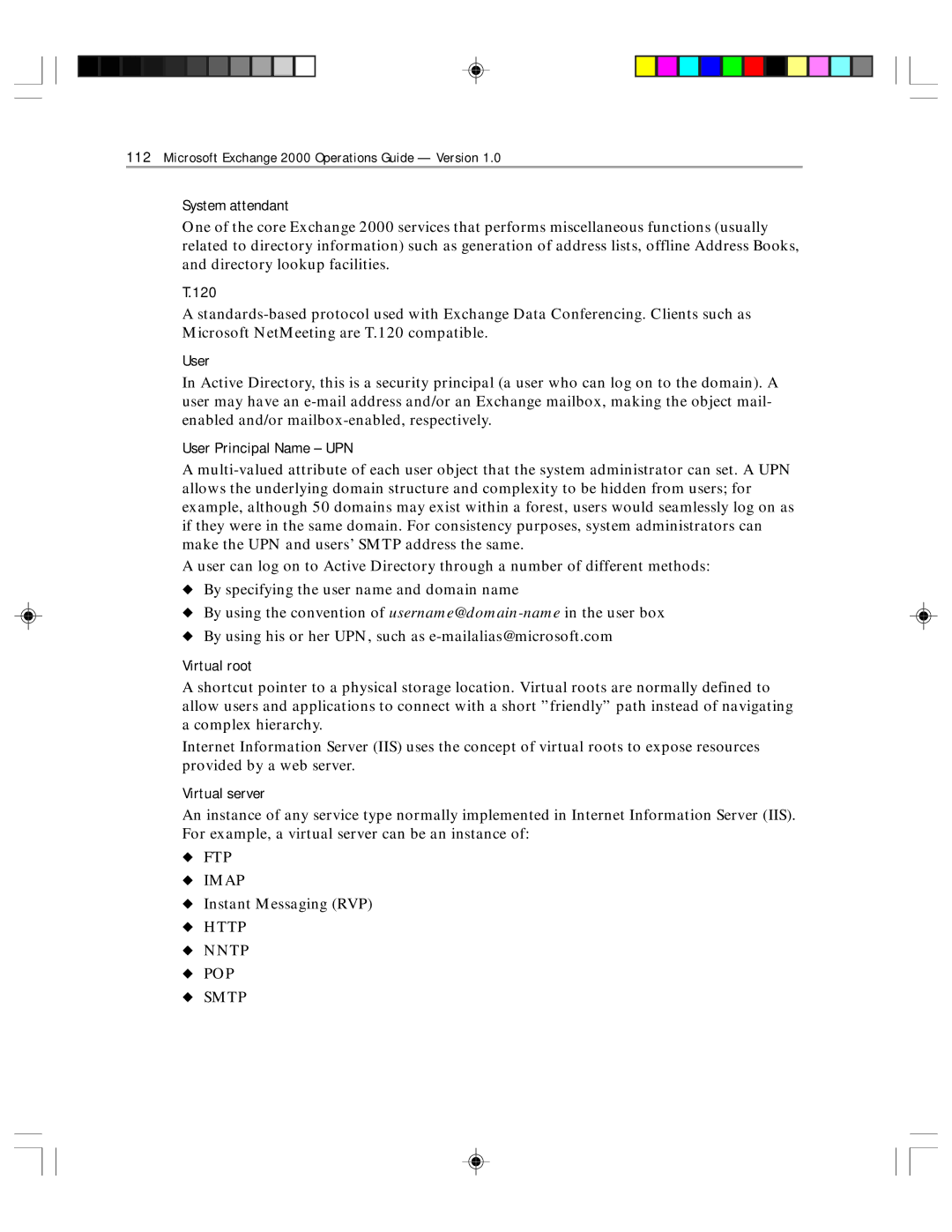
112Microsoft Exchange 2000 Operations Guide — Version 1.0
System attendant
One of the core Exchange 2000 services that performs miscellaneous functions (usually related to directory information) such as generation of address lists, offline Address Books, and directory lookup facilities.
T.120
A
User
In Active Directory, this is a security principal (a user who can log on to the domain). A user may have an
User Principal Name – UPN
A
A user can log on to Active Directory through a number of different methods:
◆By specifying the user name and domain name
◆By using the convention of
◆By using his or her UPN, such as
Virtual root
A shortcut pointer to a physical storage location. Virtual roots are normally defined to allow users and applications to connect with a short ”friendly” path instead of navigating a complex hierarchy.
Internet Information Server (IIS) uses the concept of virtual roots to expose resources provided by a web server.
Virtual server
An instance of any service type normally implemented in Internet Information Server (IIS). For example, a virtual server can be an instance of:
◆FTP
◆IMAP
◆Instant Messaging (RVP)
◆HTTP
◆NNTP
◆POP
◆SMTP
